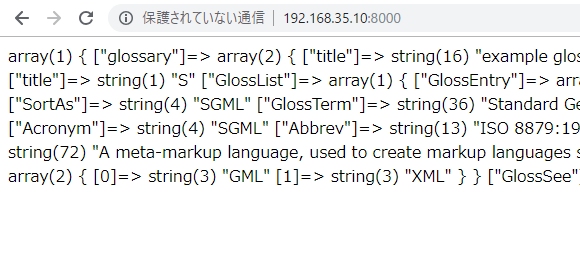file() reads a text file as a line feed delimited array. Typical use cases are parsing log files and importing line-delimited text lists.
a.txt
サンバイオ アンジェス オンコリス ラクオリア シンバイオ
var_dump(file(__DIR__ . '/a.txt')); echo "<br>"; var_dump(file(__DIR__ . '/a.txt', FILE_IGNORE_NEW_LINES)); echo "<br>"; var_dump(file(__DIR__ . '/a.txt', FILE_SKIP_EMPTY_LINES)); echo "<br>"; var_dump(file(__DIR__ . '/a.txt', FILE_IGNORE_NEW_LINES | FILE_SKIP_EMPTY_LINES));
array(6) { [0]=> string(17) “サンバイオ ” [1]=> string(17) “アンジェス ” [2]=> string(2) ” ” [3]=> string(17) “オンコリス ” [4]=> string(17) “ラクオリア ” [5]=> string(15) “シンバイオ” }
array(6) { [0]=> string(15) “サンバイオ” [1]=> string(15) “アンジェス” [2]=> string(0) “” [3]=> string(15) “オンコリス” [4]=> string(15) “ラクオリア” [5]=> string(15) “シンバイオ” }
array(6) { [0]=> string(17) “サンバイオ ” [1]=> string(17) “アンジェス ” [2]=> string(2) ” ” [3]=> string(17) “オンコリス ” [4]=> string(17) “ラクオリア ” [5]=> string(15) “シンバイオ” }
array(5) { [0]=> string(15) “サンバイオ” [1]=> string(15) “アンジェス” [2]=> string(15) “オンコリス” [3]=> string(15) “ラクオリア” [4]=> string(15) “シンバイオ” }
なんだーこれ、わかったような、わかってないような。。

